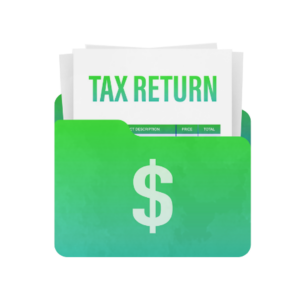
Were you expecting a larger tax refund this year than you ended up getting?
Did you perhaps owe taxes (gasp!) when you thought you should be getting some money back?
Are you wondering what you can do to set yourself up for a windfall tax refund so you don’t have to dread the tax season in springtime every year?
If any of those questions hit home for you, don’t worry: we’ve got you covered. Stick around for some tips and tricks you can use to make tax savings, reduce your tax liability and increase the money Uncle Sam owes you every March.

Before you start working the system to get the maximum tax refund possible, you should understand exactly how it is the IRS calculates who gets money back and who has to pay up.
The amount of money you’re required to pay to the government in taxes each year is called your tax liability. Your tax liability is determined by a few factors:
Filing status is basically a descriptor of the type of household you live in. There are five main statuses, and each has their own standard deduction and set of tax brackets which factor into the larger calculation of what you owe for taxes in a given year.
It’s possible that you would qualify for more than one filing status, in which case you can choose whichever would provide you with the lowest tax liability or the highest refund.
Here are the five main statuses along with the standard deduction allotted to each for the 2023 tax year:
This is basically the catch-all status for unmarried folks who don’t fall into any of the other categories.
Married couples who want to combine all of their income and also deductions on a single tax return file using this status.
Married couples who each want to file their own tax return with their own individual incomes and deductions choose this status.
If you’re unmarried but pay more than half of the cost of maintaining a household that includes themselves and at least one other qualifying person (usually a dependent child or relative) can file using this status. It generally offers more favorable tax rates and higher deductions than the “single” filing status.
If you’ve recently lost a spouse and are still supporting a child, you can use this filing status. In fact, you can file as a widow or widower with a dependent child for up to two years after the death of a spouse, so long as you don’t remarry in that time.
As you can see, those who meet the criteria for this status can take the same standard deduction offered to a couple filing jointly, which is double what they could expect to get if they filed as single, and $7,900 more than a head of household.
Your taxable income is the amount of money you make in a year that is subject to taxation by federal and state authorities. In order to calculate your taxable income, you start with the total amount of money you made in the year.
Then, subtract from that amount any “above the line” deductions for which you qualify. Above the line deductions are expenses you had in the year that reduce your taxable income separately from a standard or itemized deduction. Examples of above the line deductions you can take are payments towards student loan interest, certain medical expenses, and contributions to a traditional IRA account.
Your total income minus any above the line deductions is what’s known as your adjusted gross income. Of course, there are another round of deductions you get to take from your adjusted gross income before arriving at your taxable income. You can choose either a standard or itemized deduction, depending on which will reduce your tax liability more.
After applying deductions, you’ve arrived at your taxable income.

The way the IRS determines how much of a refund you get (or how much you owe them) is by applying the tax rate to your taxable income and then comparing that to how much you paid in taxes over the course of the previous tax year.
When you start a job and fill out a W-4, you decide how much you want to take out of each paycheck in order to prepay your tax liability.
If, at the end of the year, the amount deducted from your paychecks is more than whatever the IRS determines you owe them, you get a refund. If it’s less, you have to pay them.

Generally, the best ways to increase your tax refund (without giving up more money from each of your paychecks) are to utilize all of the available credits and deductions. Before we get into the specifics of anything, however, we’re going to take a moment to explain exactly what the difference between the two is.
A deduction on your taxes reduces the amount of income the IRS looks at when determining your tax liability.
Because a portion of the calculus that results in your tax liability is based on a percentage of your taxable income, reducing that income will reduce the dollar amount that you owe to the government in a year.
However, it’s important to note that the percentage is only a portion of the calculus. Each tax bracket has a baseline liability that the percentage of your income is added to.
Take this example: The Haversons are a married couple that makes $150,000 per year. They file their taxes jointly, which means they’ll owe $9,615 plus 22% of every dollar they made over $83,550 that year (which, in this case, is an additional $14,619).
So, while deductions can shrink the amount of money that 22% applies to, the base rate will still remain.
Whereas deductions reduce the amount of income used to calculate how much taxes you owe in a given year, a tax credit reduces your tax liability directly.
Tax credits are applied after determining tax liability, and so can reduce the amount of taxes you owe overall.
Let’s return to the above example with the Haversons. Let’s say that, somehow, they were able to reduce their Adjusted Gross Income enough that they were only being taxed on $90,000 of their income (this is wildly unlikely, but bear with me for the sake of illustration).
In this scenario, they’ll owe the base rate for their bracket of $9,615 plus 22% of $6,450 (the difference between their taxable income and $83,550), which totals $11,034.
If the Haversons could claim the maximum earned income tax credit, they would reduce their liability by $6,935, which would bring their total tax bill down to $4,099.
Basically, tax credits have more power to reduce the amount of money you owe than deductions do, because they directly impact your tax bill, whereas deductions only impact a portion of the calculus used to determine your tax bill.
Despite their being not quite as exciting as tax credits, deductions can play an important role in bumping up your tax refund. In fact, there are plenty of deductions folks can take that often get overlooked.
One important caveat to note is that, if you’re going to itemize deductions to boost your tax refund, you’ll want to make sure that the total amount of the itemized deductions will exceed the standard deduction you would receive.
So, for a single person, you would need to drum up more than $13,850 in deductions in order for it to be more helpful than taking the standard deduction.
If you make a large purchase (like a home or a vehicle) for which you had to pay state or local taxes, you can deduct the amount of taxes paid from your federal income tax return, up to $10,000 (or %5,000 each if you’re married filing separately).
Making donations in the form of money or goods to a qualified organization can also reduce your tax burden. As a general rule, you can deduct up to 50% of your AGI in charitable contributions, but they you’ll need to document your donations and they must be made to organizations on the IRS’s official tax exempt organization list.
It’s been a few years since anyone’s been charged interest on their student loan debt, so this deduction may not be super relevant to everyone right now. However, if you have been paying student loan interest, you can deduct that amount from your taxes every year.
Back in the day, you could deduct unreimbursed mileage related to your job on your taxes, but those days are long gone. There are, however, still a few situations in which you can deduct mileage.
If you drive for any of the following reasons, you can claim up to $0.63 per mile as a deduction on your taxes:

Tax deductions are all well and good, but tax credits are the best way to boost the number you see on your tax refund each year. Here are a few tax credits you should consider claiming if they apply to you:
The EITC is designed to help low income families find tax relief, especially if they have children. In order to qualify for this tax credit, you have to make below certain benchmarks of income, which change depending on your filing status and how many children you have, as does the amount you can claim. If you have three or more dependent children, however, this tax credit could be worth up to $6,935.
If you have home renovations to do and want to be able to reap some tax refund incentives for doing them, consider making energy efficient repairs.
Right now, you can claim up to 30% of the cost of home repairs that are deemed energy efficient as credits on your taxes. This credit can be applied to everything from exterior doors and windows to solar installations.
So, if you’re going to be fixing your place up anyways, going green can actually boost your tax refund significantly.
If you have kids, you know just how expensive childcare can be. You might know this even if you don’t have kids because your friends who do won’t stop talking about it. Luckily, you can recoup some of those expenses in the form of tax credits to boost your refund.
The Child and Dependent Care tax credit is worth up to $6,000 if you’re married filing jointly, or $3,000 per person if you’re married filing separately.
If you make contributions to a traditional IRA, you can deduct these deposits from your taxes. If you’re under 70, you can deduct up to $6,000 in IRA contributions (it goes up to $7,000 if you’re over 70). Just keep in mind that contributions to Roth IRAs are not eligible for any tax credits.

If you don’t want to read all that but still want to get the largest refund possible when tax time comes around, here are the tips we’d recommend implementing:
When you get a new job, you will have to fill out a W4 form, which is how you determine how much money gets taken out of your paycheck towards your annual tax burden.
If you put a 0 on the form, they will taxe the maximum amount out and apply it towards your taxes. Putting a 1 in the form means you will keep more of your paycheck, however you end up paying less taxes during the year.
So, if you’re a single person with no dependents (which means your tax bill is likely to be higher), 0 is probably the right move, since if you put 1 you will likely have to pay taxes come spring time.
If you have dependents that reduce your tax liability, however, you can withhold more on your w4 and keep more of your paycheck without having to pay taxes in springtime.
How much you can expect to get on your tax return depends on more than your filing status and your income — which deductions and tax credits you use can impact your refund just as much, as does where you live (for example, Tennessee doesn’t have any state tax, so folks who live there end up with larger returns than folks who live in, say, California).
Having said that, the average refund for all returns filed in 2022 (so the 2021 tax year) was a little over $3,000.
If you want to maximize the amount of money you get back on your tax return each year, you’ll want to optimize the tax deductions and tax credits you take, and make sure you’re using the best filing status possible given your specific situation.
While stories abound on the internet of people getting tax refunds of $20,000 and above, these are uncorroborated anecdotes for the most part. Even if they are true, they involve some pretty specific and weird situations most normal Americans would be hard-pressed to replicate.
YOUR FREE FINANCIAL PLAN
Are you ready to invest in your future?
Build your free plan today.
Start now